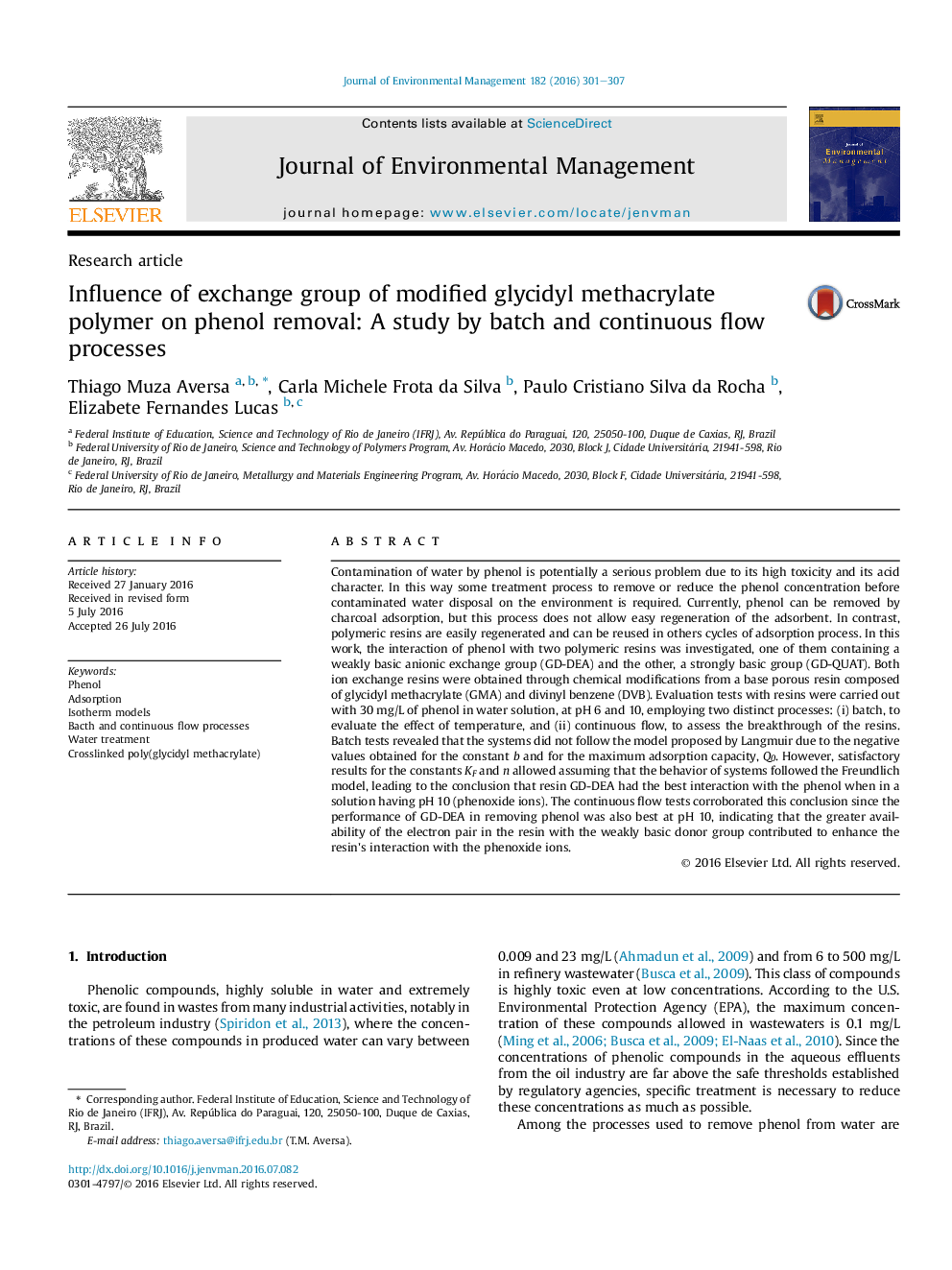| کد مقاله | کد نشریه | سال انتشار | مقاله انگلیسی | نسخه تمام متن |
|---|---|---|---|---|
| 7479111 | 1485230 | 2016 | 7 صفحه PDF | دانلود رایگان |
عنوان انگلیسی مقاله ISI
Influence of exchange group of modified glycidyl methacrylate polymer on phenol removal: A study by batch and continuous flow processes
ترجمه فارسی عنوان
تأثیر گروه مبادله پلیمر گلیسیدیل متاکریلات پلی اتیلن بر فرآیند حذف فنل: مطالعه ای با فرآیند جریان مجزا و پیوسته
دانلود مقاله + سفارش ترجمه
دانلود مقاله ISI انگلیسی
رایگان برای ایرانیان
کلمات کلیدی
فنل، جذب، مدل های ایزوترم فرایندهای جریان برگشتی و مداوم، تصفیه آب، پلی کربنات (گلیسیدیل متاکریلات)،
موضوعات مرتبط
مهندسی و علوم پایه
مهندسی انرژی
انرژی های تجدید پذیر، توسعه پایدار و محیط زیست
چکیده انگلیسی
Contamination of water by phenol is potentially a serious problem due to its high toxicity and its acid character. In this way some treatment process to remove or reduce the phenol concentration before contaminated water disposal on the environment is required. Currently, phenol can be removed by charcoal adsorption, but this process does not allow easy regeneration of the adsorbent. In contrast, polymeric resins are easily regenerated and can be reused in others cycles of adsorption process. In this work, the interaction of phenol with two polymeric resins was investigated, one of them containing a weakly basic anionic exchange group (GD-DEA) and the other, a strongly basic group (GD-QUAT). Both ion exchange resins were obtained through chemical modifications from a base porous resin composed of glycidyl methacrylate (GMA) and divinyl benzene (DVB). Evaluation tests with resins were carried out with 30Â mg/L of phenol in water solution, at pH 6 and 10, employing two distinct processes: (i) batch, to evaluate the effect of temperature, and (ii) continuous flow, to assess the breakthrough of the resins. Batch tests revealed that the systems did not follow the model proposed by Langmuir due to the negative values obtained for the constant b and for the maximum adsorption capacity, Q0. However, satisfactory results for the constants KF and n allowed assuming that the behavior of systems followed the Freundlich model, leading to the conclusion that resin GD-DEA had the best interaction with the phenol when in a solution having pH 10 (phenoxide ions). The continuous flow tests corroborated this conclusion since the performance of GD-DEA in removing phenol was also best at pH 10, indicating that the greater availability of the electron pair in the resin with the weakly basic donor group contributed to enhance the resin's interaction with the phenoxide ions.
ناشر
Database: Elsevier - ScienceDirect (ساینس دایرکت)
Journal: Journal of Environmental Management - Volume 182, 1 November 2016, Pages 301-307
Journal: Journal of Environmental Management - Volume 182, 1 November 2016, Pages 301-307
نویسندگان
Thiago Muza Aversa, Carla Michele Frota da Silva, Paulo Cristiano Silva da Rocha, Elizabete Fernandes Lucas,
